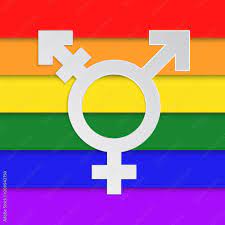Navigating the complexities of gender identity can be daunting, especially when it comes to understanding what causes someone to identify as transgender. Many people often wonder about the origins of transgender identity and the interplay of various factors that shape it. In this article, we’ll explore the scientific, psychological, cultural, and social aspects that contribute to understanding transgender identities. We aim to break down the common myths and misconceptions surrounding this topic, fostering a deeper understanding of the variations in human experience.
Understanding Gender Identity: A Quick Overview
Gender identity is a deeply personal sense of one’s own gender, which may or may not align with the sex assigned at birth. For many, this identity can be fluid, evolving over time. While some individuals identify strictly as male or female, others may embrace non-binary, genderqueer, or genderfluid identities. The journey of self-discovery for transgender individuals is unique and often complex, reflecting the diversity of human experience.1 Week Ftm Testosterone Timeline ChartNatural Estrogen Blockers
It’s essential to recognize that gender identity is distinct from sexual orientation. While gender identity pertains to how individuals see themselves, sexual orientation deals with whom they are attracted to. Understanding this difference is crucial in having informed conversations about transgender issues, as it helps dismantle stereotypes that can lead to discrimination and misunderstanding.
The Role of Biology in Gender Development
Biological factors play a significant role in gender development. Research indicates that genetics, hormonal influences during prenatal development, and brain structure differences may contribute to how individuals experience their gender. For instance, some studies have suggested that variations in hormone levels during critical periods of brain development may influence gender identity.
While biology provides a foundational understanding, it doesn’t offer a complete picture. Gender identity cannot be reduced to mere biology alone; it’s an amalgamation of biological, psychological, and social influences. Thus, while biology shapes certain aspects of our identity, it interacts with a broader spectrum of factors that must also be considered.
Nature vs. Nurture: What’s the Real Deal?
The age-old debate of nature versus nurture is particularly relevant when discussing transgender identities. On one side, proponents of the "nature" argument posit that biological elements such as genes and hormones dictate gender identity. They argue that being transgender is not a choice but rather a natural occurrence rooted in these biological influences.
On the other hand, the "nurture" perspective emphasizes the role of environment, culture, and upbringing. Supporters of this view suggest that societal expectations and personal experiences significantly influence how individuals perceive and express their gender identity. The reality is likely a blend of both—nature sets the stage, while nurture shapes the performance.
The Impact of Society on Gender Perception
Society plays a pivotal role in shaping our understanding of gender. Cultural norms and expectations can dictate what is considered "appropriate" behavior for different genders, often leading to rigid stereotypes. For transgender individuals, these societal pressures can result in challenges related to acceptance, self-expression, and mental well-being.
Moreover, the visibility and representation of transgender people in media and public life have been increasing, which can influence how society perceives gender identity. Positive representation can foster acceptance and understanding, while a lack of representation can reinforce stigma and discrimination. This dynamic demonstrates the significant impact societal attitudes have on the lived experiences of transgender individuals.
Exploring the Psychological Aspects of Transgender
The psychological aspects of being transgender are vast and multifaceted. Many transgender individuals experience a sense of incongruence between their gender identity and assigned sex, which can lead to feelings of distress or discomfort. This condition, known as gender dysphoria, can manifest in a range of emotional and psychological symptoms, prompting individuals to seek social or medical transition.
Additionally, the mental health of transgender individuals can be significantly affected by external factors such as stigma, discrimination, and lack of support. Studies have shown that transgender individuals are at a higher risk for mental health issues, including anxiety and depression, largely due to societal prejudice. Understanding these psychological dimensions is crucial for fostering supportive environments that promote the well-being of transgender individuals.
Cultural Influences and Their Effect on Gender Identity
Cultural context significantly impacts how gender identity is formed and understood. Different cultures have unique concepts of gender that can vary widely from Western binary norms. For instance, some Indigenous cultures recognize Two-Spirit individuals, who embody both masculine and feminine qualities and hold special cultural significance.
Understanding these cultural nuances is essential for recognizing the diversity of gender identities globally. The acceptance and acknowledgment of various identities can enhance the conversation surrounding transgender issues, allowing for a more inclusive understanding that transcends cultural boundaries.
The Importance of Personal Experience in Understanding
Individual experiences are foundational in understanding transgender identities. Each person’s journey is unique, influenced by a myriad of factors including family dynamics, societal expectations, and personal revelations. Listening to and amplifying transgender voices and experiences is crucial for grasping the complexities of gender identity.
Moreover, personal stories help to humanize the topic, fostering empathy and understanding. They remind us that behind statistics and studies are real people navigating their identities in a world that often struggles to accept them. Personal narratives can bridge gaps in understanding and promote a more accepting society.
Myths and Misconceptions About Transgender People
Despite growing awareness, many myths and misconceptions about transgender individuals persist. One common myth is that being transgender is merely a phase or a trend. In reality, transgender identities are valid and often involve deep-seated feelings that are not temporary or fleeting.
Another misconception is that all transgender individuals desire to undergo surgery or hormone treatments. The truth is that each person’s journey is unique, and not everyone feels the need for medical transition. Acknowledging these misconceptions is crucial in fostering a more informed, compassionate society that respects the diverse experiences of transgender individuals.
Understanding what causes someone to identify as transgender is a complex journey that involves an interplay of biological, psychological, social, and cultural factors. By exploring these dimensions, we can begin to dismantle the stereotypes and misconceptions that persist in society. Ultimately, fostering open conversations and supportive environments is essential for promoting acceptance and understanding of all gender identities, creating a world where everyone can feel safe and valued for who they truly are.


